Bushnell Park Soldiers and Sailors Memorial Arch, Hartford
Introduction
Text-to-speech Audio
Images
Soldier & Sailors Memorial Arch
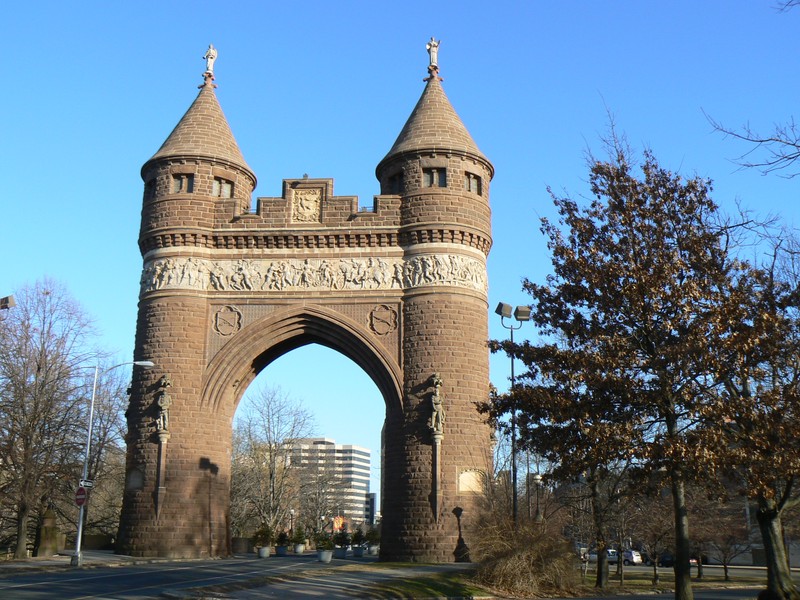
The south side frieze depicting soldiers and sailors returning home from the ware.
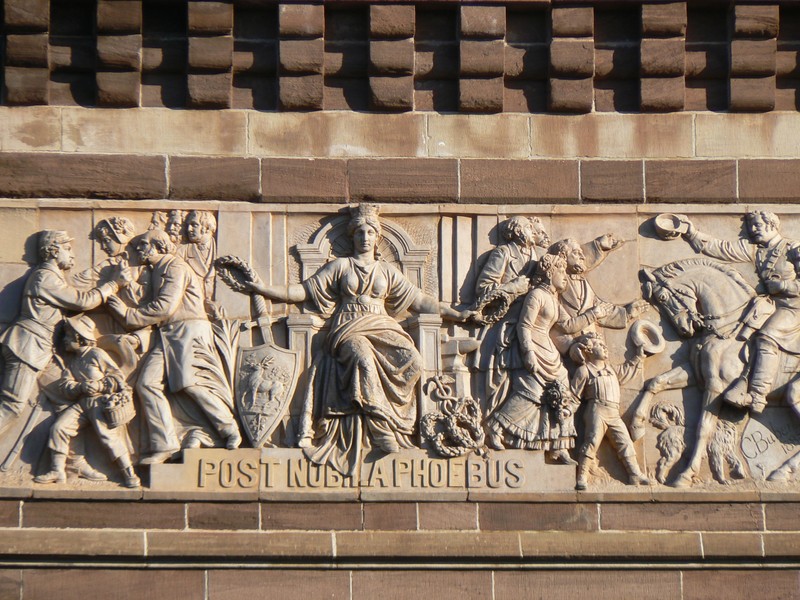
Decorative elements on the South side of the arch honoring the infantry and the cavalry.
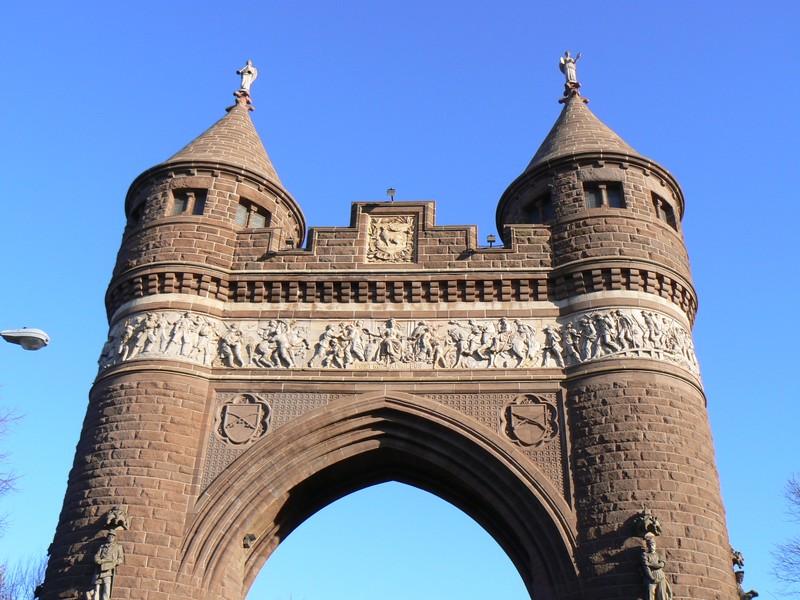
Photo a Mason, one of the six figures depicting occupations left behind with men went off to serve in the Civil war.
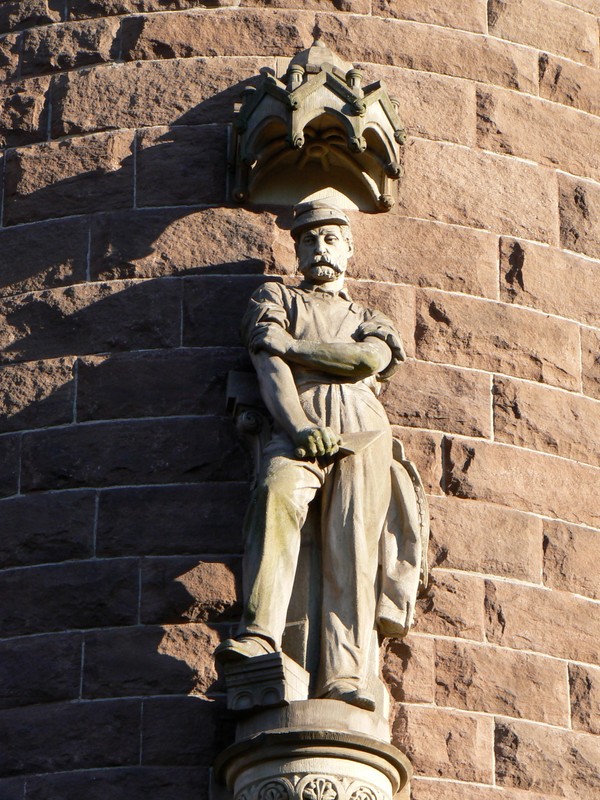
Frieze of General Ulysses S. Grant looking on has the infantry and cavalry advance on the battlefield.
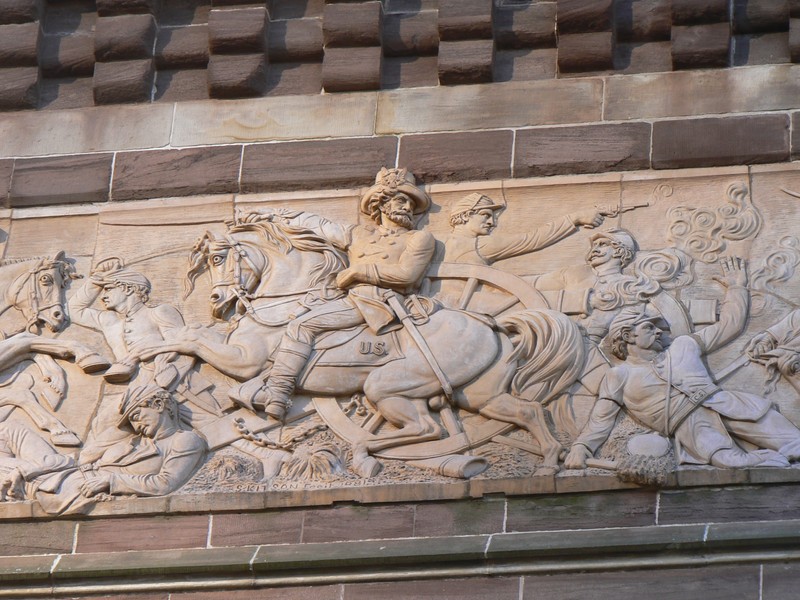
Inscription on the Southwest side of the West tower.
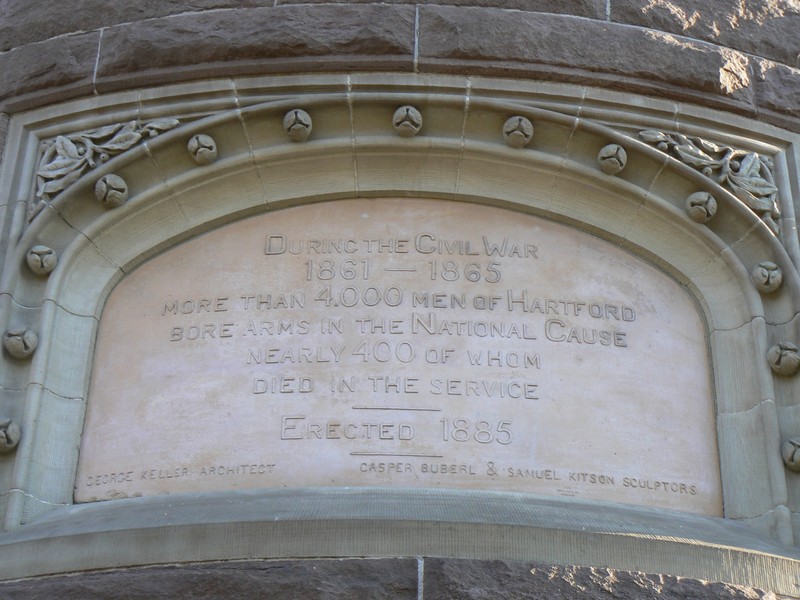
Inscription on the Southeast side of the East tower.
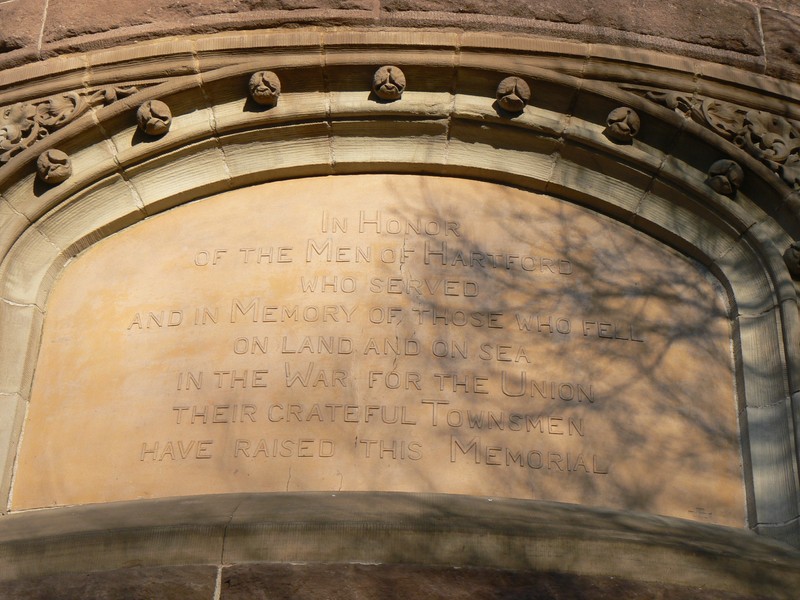
Inscription honoring George Keller and his wife.
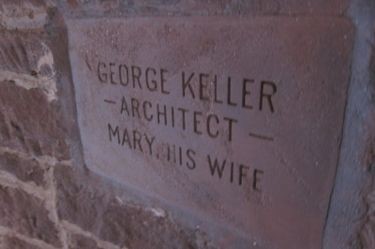
Backstory and Context
Text-to-speech Audio
The Soldiers and Sailors Memorial Arch is located across Trinity Street in Bushnell Park in Hartford, Connecticut. The monumental arch has two towers and a walkway that connects them. It is made out of Portland Brownstone and Terracotta. The Gothic style arch stands one-hundred and sixty feet tall, spans thirty feet across. The monument has two medieval towers are sixty-seven feet round and is topped with a conical roof. The towers are connected by a walkway inside crenelated parapets. The monument became one of the first Civil War monuments in Connecticut and was constructed at a total cost of $60,000.
The monument was designed by George Keller, who also designed the Soldiers' National Monument at Gettysburg and the U.S. Soldier Monument in Antietam. Keller was a leading memorial architect and was approached about the construction of this monument after leaders of the effort held a design competition that they did not feel had yielded a suitable design. After negotiations with the Hartford Memorial Committee, Keller received the commission to design the arch. He designed the arch at the end of the bridge over the Park River to save on costs.
The memorial includes a series of Terracotta friezes that depict scenes of the Civil War and the return of the cities veterans who served during that time period. The north frieze was sculpted by Samuel Kitson and depicts battle scene of the war. A second frieze features the image of General Ulysses S. Grant watching the infantry and cavalry advancing on a battlefield. On the left, a frieze depicts marines leaping from a boat and rushing to engage Confederates soldiers. The south frieze was sculpted by Caspar Buberl and tells a story of peace as it illustrates the Hartford soldiers and sailors reuniting with their family members as they are leaving the ship. The Latin moto post nubila phoebus which means "after clouds, the sun" is inscribed in the middle of the scene. It reflects on the happiness and optimism following the darkness of the Civil War.
Below the friezes are decorative elements that honor all four services. On the North side of the arch the Navy is honored with an anchor and the artillery service is honored with crossed cannons. On the South side of the arch the infantry is honored with crossed riffles and the cavalry is honored with crossed swords. The two turrets are decorated with six figures, three on each tower, depicting the occupations left behind as they ventured off to fight in the Civil War. These figures were completed in 1894 and include the Farmer, Blacksmith, Mason, Merchant, Student and Carpenter. Each tower also has an angel playing a musical instrument, one playing a trumpet and the other playing cymbals. Each tower also has a staircases and the walls include the names of the fallen Hartford soldiers and sailors that lost their lives fighting in the Civil War.
When George Keller and his wife died, they were cremated and their ashes were put in the arch behind an iron door in the east tower. In 1986-88 the monumental arch underwent a $1,500,000 rehabilitation by architect, Dominick C. Cimino. The finial angles on the towers were replaced as well as original Terra-cotta that had fallen. The Terra-cotta was replaced with bronze.
Inscriptions on the monument include:
Southeast Side of East Tower:
IN HONOR
OF THE MEN OF HARTFORD
WHO SERVED
AN IN MEMORY OF THOSE WHO FELL
ON LAND AND SEA
IN THE WAR FOR THE UNION
THEIR GRATEFUL TOWNSMEN
HAVE RAISED THIS MEMORIAL
Southwest Side of the West Tower:
DURING THE CIVIL WAR
1861-1865
MORE THAN 4000 MENT OF HARTFORD
BORE ARMS IN THE NATIONAL CAUSE
NEARLY 400 OF WHOM DIED IN SERVICE
----------------------
ERECTED 1885
----------------------
GEORGE KELLER ARCHITECT CASPAR
BUBERL & SAMUEL KITSON SCULPTORS
Cite This Entry
Jennifer Edmonds and Clio Admin. "Bushnell Park Soldiers and Sailors Memorial Arch, Hartford." Clio: Your Guide to History. April 16, 2017. Accessed April 14, 2025. https://theclio.com/entry/34176
Sources
Says, P. (n.d.). Soldiers & Sailors Memorial Arch. Retrieved April 06, 2017, from http://www.ctmq.org/soldiers-sailors-memorial-arch/
Pelland, D. (2010, February 1). SOLDIERS’ AND SAILORS’ MEMORIAL ARCH, HARTFORD. Retrieved April 06, 2017, from http://ctmonuments.net/2010/02/soldiers%E2%80%99-and-sailors%E2%80%99-memorial-arch-hartford/

